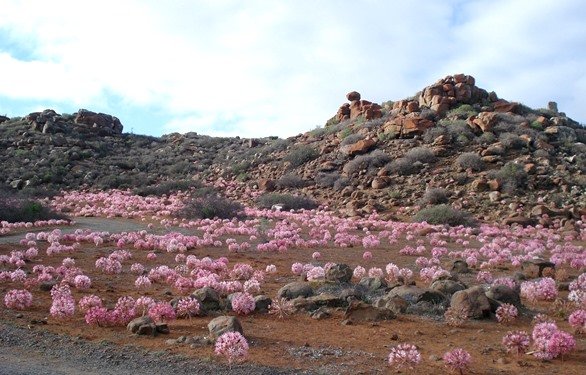Brunsvigia bosmaniae by a western Karoo koppie

Author: Ivan Lätti
Photographer: Judd Kirkel Welwitch
Brunsvigia bosmaniae does well in coastal sands, loam, granite, and clay soils, often multiplying on unlikely looking open flats and rocky outcrops. Here it picked the flatter, opener part, but is not restricted to that. The large, moisture-storing bulbs allow these plants to survive prolonged drought. Their resilience means bulbs can lie dormant for years, waiting for the right conditions to emerge and flower.
The leaves grow only in winter, replenishing and augmenting the bulb. Flowers arrive just before that in autumn of years during which the preparation of last winter was adequate. In regions like this the summer should be ducked altogether, according to B. bosmaniae wisdom, tradition, habit or genes.
Arid land, even desert may infrequently burst into miraculous floral colour, caused by slow, generational adaptations in resilient local species. No rainmaker is the magician here, the rain is (Duncan, et al, 2016; Manning, 2007; iNaturalist; https://pza.sanbi.org; https://www.worldfloraonline.org).

